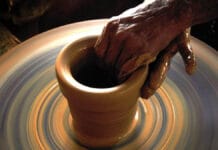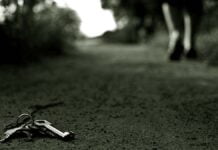Articles are words that define a noun as specific or unspecific. In English, there are three articles: a, an, and the. They are used before nouns or noun equivalents and are a type of adjective. The definite article (the) is used before a noun to indicate that the identity of the noun is known to the reader. The indefinite article (a, an) is used before a noun that is general or when its identity is not known.
Definite Article
the (before a singular or plural noun)
The definite article is the word the. It limits the meaning of a noun to one particular thing.
Indefinite Article
a (before a singular noun beginning with a consonant sound)
an (before a singular noun beginning with a vowel sound)
The indefinite article takes two forms. It’s the word a when it precedes a word that begins with a consonant. It’s the word an when it precedes a word that begins with a vowel. The indefinite article indicates that a noun refers to a general idea rather than a particular thing.

How Articles are Used
To understand how articles are used, it is important to know that nouns can be either count (can be counted) or noncount (indefinite in quantity and cannot be counted). In addition, count nouns are either singular (one) or plural (more than one). Noncount nouns are always in the singular form.
- Count nouns – refer to items that can be counted and are either singular or plural
- Noncount nouns – refer to items that are not counted and are always singular
For example, if we are speaking of water that has been spilt on the table, there can be one drop (singular) or two or more drops (plural) of water on the table. The word drop in this example is a count noun because we can count the number of drops. Therefore, according to the rules applying to count nouns, the word drop would use the articles a or the.
If we are speaking of water in general spilt on the table, it would not be appropriate to count one water or two waters – there would simply be water on the table. Water is a noncount noun. Therefore, according to the rules applying to noncount nouns, the word water would use no article or the, but not a.
Rules for Articles
| COUNT NOUNS | NONCOUNT NOUNS | |
| Rule #1 Specific identity not known | a, an | (no article) |
| Rule #2 Specific identity known | the | the |
| Rule #3 All things or things in general | (no article) | (no article) |
Following are the three specific rules which explain the use of definite and indefinite articles.
Rule #1 – Specific Identity Not Known
Use the indefinite article a or an only with a singular count noun whose specific identity is not known to the reader. Use a before nouns that begin with a consonant sound, and use an before nouns that begin with a vowel sound.
- Use the article a or an to indicate any non-specified member of a group or category.
I think an animal is in the garage.
That man is a scoundrel.
We are looking for an apartment.
- Use the article a or an to indicate one in number (as opposed to more than one).
I own a cat and two dogs.
- Use the article a before a consonant sound, and use an before a vowel sound.
a boy, an apple
Sometimes an adjective comes between the article and the noun.
an unhappy boy, a red apple
- The plural form of a or an is some. Use some to indicate an unspecified, limited amount (but more than one).
an apple, some apples
Rule #2 – Specific Identity Known
Use the definite article the with any noun (whether singular or plural, count or noncount) when the specific identity of the noun is known to the reader, as in the following situations.
- Use the article the when a particular noun has already been mentioned previously.
I ate an apple yesterday. The apple was juicy and delicious.
- Use the article the when an adjective, phrase, or clause describing the noun clarifies or restricts its identity.
The boy sitting next to me raised his hand.
Thank you for the advice you gave me.
- Use the article the when the noun refers to something or someone unique.
the theory of relativity
the 2003 railway budget
Rule #3 – All Things or Things in General
Use no article with plural count nouns or any noncount nouns used to mean all or in general.
Trees are beautiful in the fall. (All trees are beautiful in the fall.)
He was asking for advice. (He was asking for advice in general.)
I do not like coffee. (I do not like all coffee in general.)
Additional Information for Using Articles
- When indicating an unspecified, limited amount of a count or noncount noun, use some.
My cousin was seeking some advice from a counsellor (not advice in general or advice about everything, but a limited amount of advice).
I would love some coffee right now (not coffee in general, but a limited amount of coffee).
We might get rain tomorrow. Some rain would be good for the crops (a certain amount of rain, as opposed to rain in general).
There are some drops of water on the table (a limited number, but more than one drop).
- Noncount nouns are those which usually cannot be counted. Following are some common examples.
Certain food and drink items: bacon, beef, bread, broccoli, butter, cabbage, candy, cauliflower, celery, cereal, cheese, chicken, chocolate, coffee, corn, cream, fish, flour, fruit, ice cream, lettuce, meat, milk, oil, pasta, rice, salt, spinach, sugar, tea, water, wine, yoghurt
Certain nonfood substances: air, cement, coal, dirt, gasoline, gold, paper, petroleum, plastic, rain, silver, snow, soap, steel, wood, wool
Most abstract nouns: advice, anger, beauty, confidence, courage, employment, fun, happiness, health, honesty, information, intelligence, knowledge, love, poverty, satisfaction, truth, wealth
Areas of study: history, math, biology, etc.
Sports: soccer, football, baseball, hockey, etc.
Languages: Chinese, Spanish, Russian, English, etc.
Other: clothing, equipment, furniture, homework, jewellery, luggage, lumber, machinery, mail, money, news, poetry, pollution, research, scenery, traffic, transportation, violence, weather, work
- Geographical names are confusing because some require the and some do not.
Use the with: united countries, large regions, deserts, peninsulas, oceans, seas, gulfs, canals, rivers, mountain ranges, groups of islands
the Gobi Desert
the United Arab Emirates
the Brahmaputra River
the Indians
Do not use the with: streets, parks, cities, states, counties, most countries, continents, bays, single lakes, single mountains, islands
Japan
Chico
Mt. Everest
San Francisco Bay
Examples of Article Usage
I do not want a gun in my house (any gun).
The gun is in his closet (which implies there is a specific gun).
I am afraid of guns (all guns in general).
She sent me a postcard from Italy (an unspecific postcard – not a letter, not an e-mail).
It’s the postcard that I have in my office (one specific postcard).
Getting postcards makes me want to travel (any postcard in general).
I have a dog (one dog).
The dog is very friendly (the dog that I have already mentioned).
Dogs make great pets (dogs in general).
Geeta needs furniture in her apartment (furniture is a noncount noun).
She is going to select the furniture that she needs (the specific furniture that she needs).
She hopes to find some furniture this weekend (an unspecified, limited amount of furniture).
We are going to see the Taj Mahal this weekend (the only Taj Mahal).





























